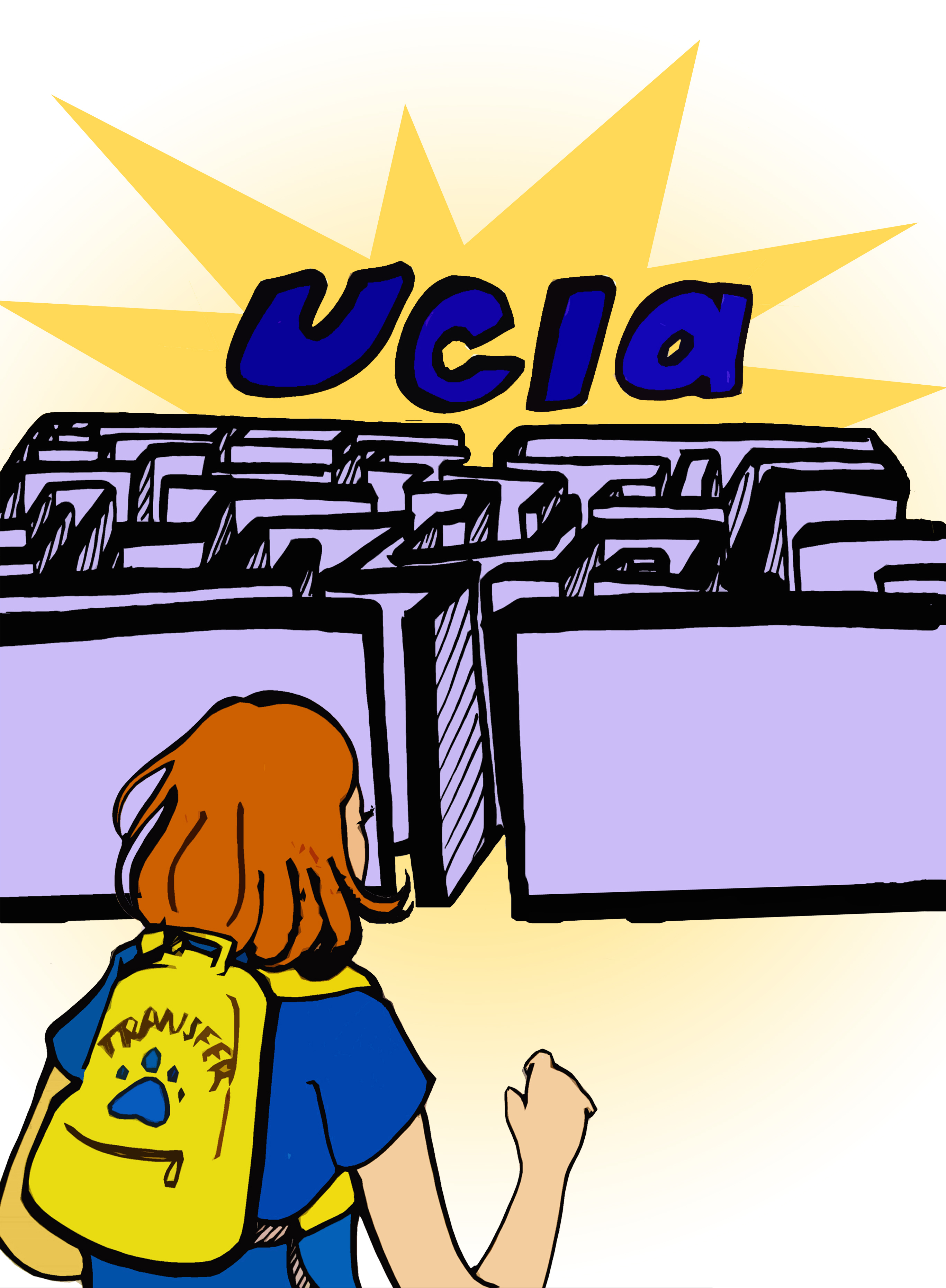Arthur Wang: UC transfer advice comes best from transfer students

(Shelby Chan/Daily Bruin senior staff)
By Arthur Wang
July 13, 2015 7:52 a.m.
Love or hate Janet Napolitano, the head of the University of California has done more significant work to call attention to transfer students than any other UC president in recent memory.
Her commitment to transfer students, which has involved repeated verbal commitments and the creation of a task force devoted to improving the transfer process, has led to the introduction of Transfer Pathways. This program allows community college students studying popular majors to complete a single set of coursework at their community college that is applicable toward any of the nine undergraduate UCs. Ten majors, including sociology and biology, currently have pathways, with the UC set to finalize 11 more in the coming months.
The impact of this clear “academic roadmap” cannot be underestimated. However, the move can be amplified if the UC seriously considers the largely untapped potential of current and recent UC transfers – students like me – who have firsthand experience and a few ideas on how to make transferring friendlier to students. A student outreach program is a common-sense way to allay potentially misguided advice from counselors and would be a move away from UC’s approach to systemwide concerns through deployment of staff, rather than student, talent.
The rollout of Pathways works toward the 2-to-1 ratio of freshmen to transfer admits recommended in the California Master Plan for Higher Education and described by the much-discussed May Revision to the 2015-2016 state budget. Simplifying the transfer process is also the first of five recommendations made to the UC by Napolitano’s Transfer Action Team, which seeks to address why transfer applications have declined nearly 9 percent in the last four years.
The team’s recommendations to bolster UC outreach efforts at community colleges is to be conducted by staff instead of students. Student-centered outreach can start by connecting with transfer student centers across UC campuses and looking for students to serve as quasi-official liaisons between their current campus and past community colleges, perhaps with some compensation.
I understand the limitations of the UC approach to helping transfers firsthand, particularly with regard to its ability to connect directly with students. With a close friend and fellow transfer student, I run One Year Transfer, an informational blog that addresses individual questions pertaining to the transfer process. The site has grown beyond our expectations in nearly two years thanks to the credibility lent by our own experiences.
We have an ability to explain the information that’s out there. But this is something that has taken many hours of research and discussion between the two of us – something few prospective transfers, many of which are employed, have the time to do.
Confused students seem to prefer turning to other students, who have shared and relatable experiences. They prefer friends over counselors or official websites – how else is higher education forum College Confidential so popular? Truth be told, the UC makes our job easy. The blog addresses readers in a question-and-answer format, and oftentimes we will simply redirect readers to a UC resource for an answer.
In other instances, we have helped students who turned to us after finding out that their community college’s counselor was uninformed or unavailable. Worse, we have had to correct students who received misinformation from their counselors, including one who told a reader that Advanced Placement courses cannot be applied toward transfer admission. This suggests that the UC should reconsider its approach to showing transfers where to find information.
Of course, counselors can’t be counted out entirely, as they are well-versed in the policies of the community colleges they serve and provide valuable emotional and moral guidance to distraught students. But when it comes to the UC, sometimes the students really do trump the experts. This is the case, for example, with the transfer students who volunteer or work at their campus transfer center or transfer resource office.
The UC is actually not foreign to the concept of addressing students as resources instead of lost academic souls. Last year, One Year Transfer received a call from the UC Office of the President Communications department for advice on improving information flow between the UC and prospective transfers. We had a lively discussion, but were not told much afterward about how our conversation would work toward solving current issues.
The lack of a follow-up might have been unsurprising, but as students interested in seeing the UC improve, it was disappointing. We wanted to know how we could help reduce the proliferation of admissions ‘myths,’ among other unresolved issues dealt with by both our blog and the UC.
The University of California is doing more to help transfers than in past years. But when it comes to the community college students themselves, the UC should realize that there’s an easy way to help them transfer – by asking those who have.


